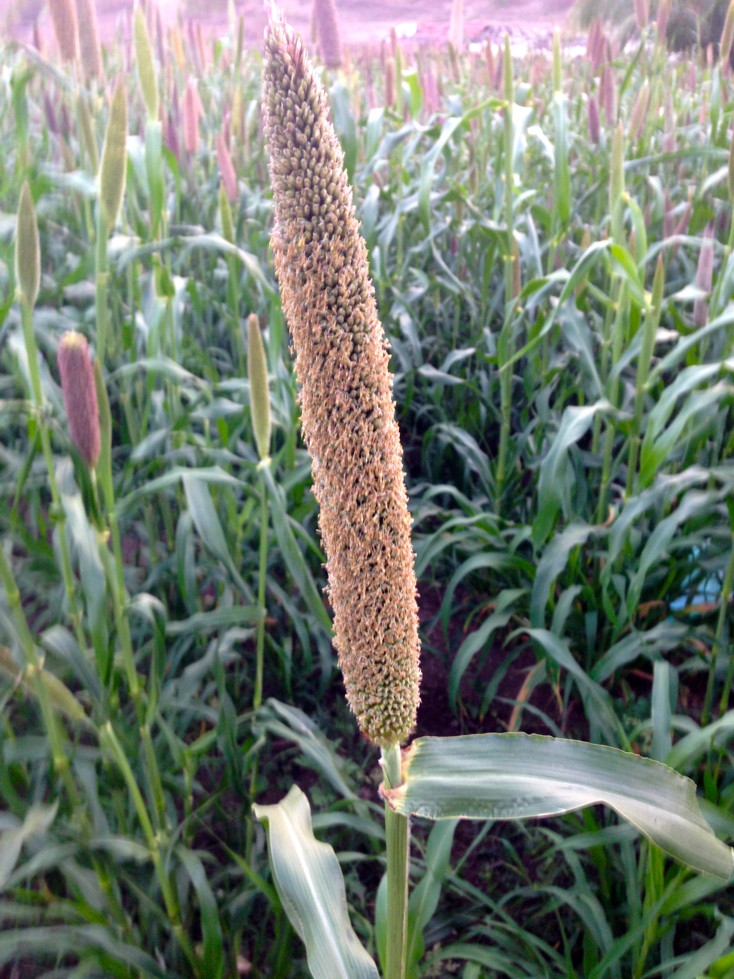By Philip Bethge
It may not make his family wealthy, but Devran Mankar is still grateful for the pearl millet variety called Dhanshakti (meaning “prosperity and strength”) he has recently begun growing in his small field in the state of Maharashtra, in western India. “Since eating this pearl millet, the children are rarely ill,” raves Mankar, a slim man with a gray beard, worn clothing and gold-rimmed glasses.
Mankar and his family are participating in a large-scale nutrition experiment. He is one of about 30,000 small farmers growing the variety, which has unusually high levels of iron and zinc — Indian researchers bred the plant to contain large amounts of these elements in a process they call “biofortification.” The grain is very nutritional,” says the Indian farmer, as his granddaughter Kavya jumps up and down in his lap. It’s also delicious, he adds. “Even the cattle like the pearl millet.”
